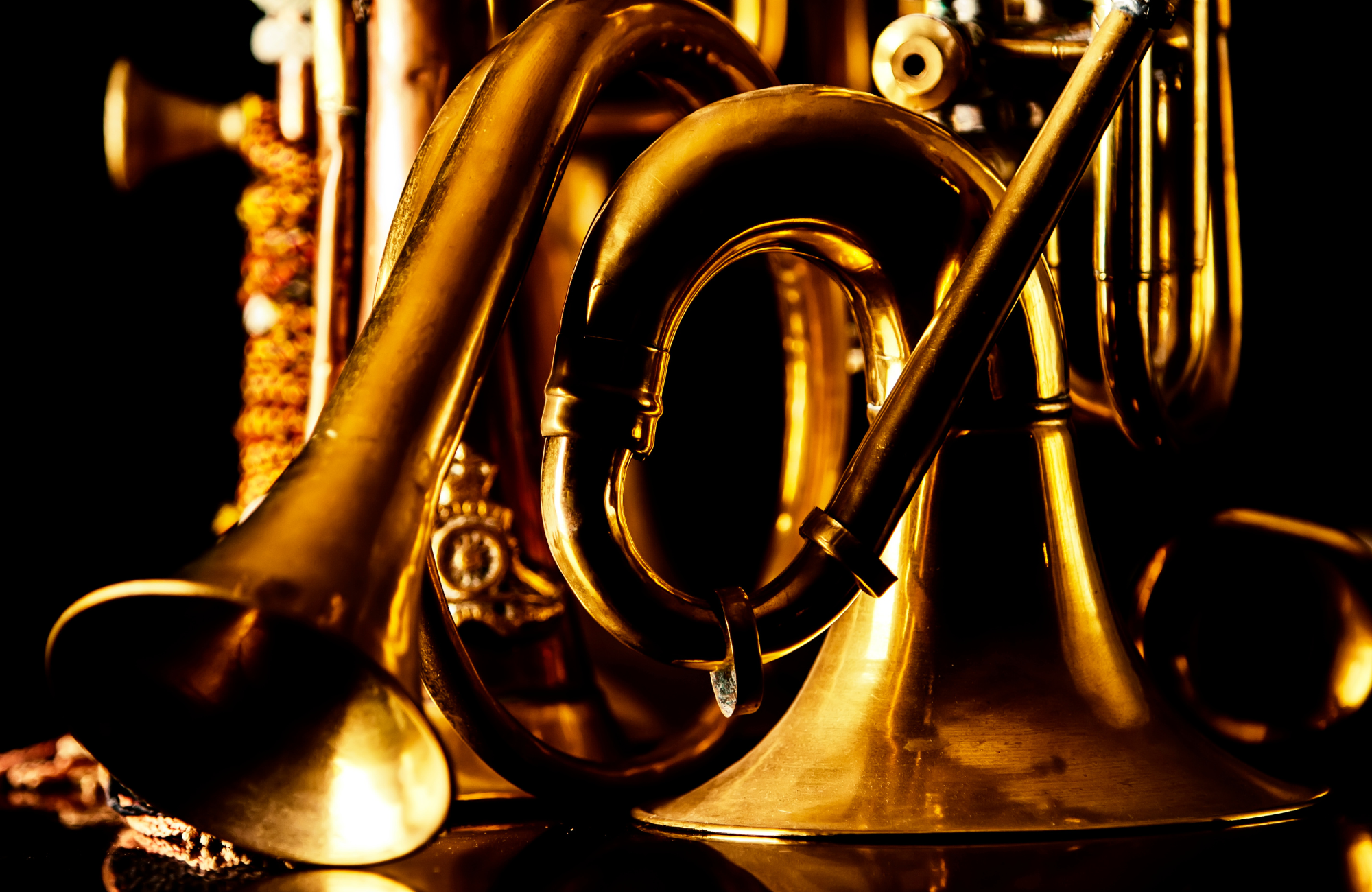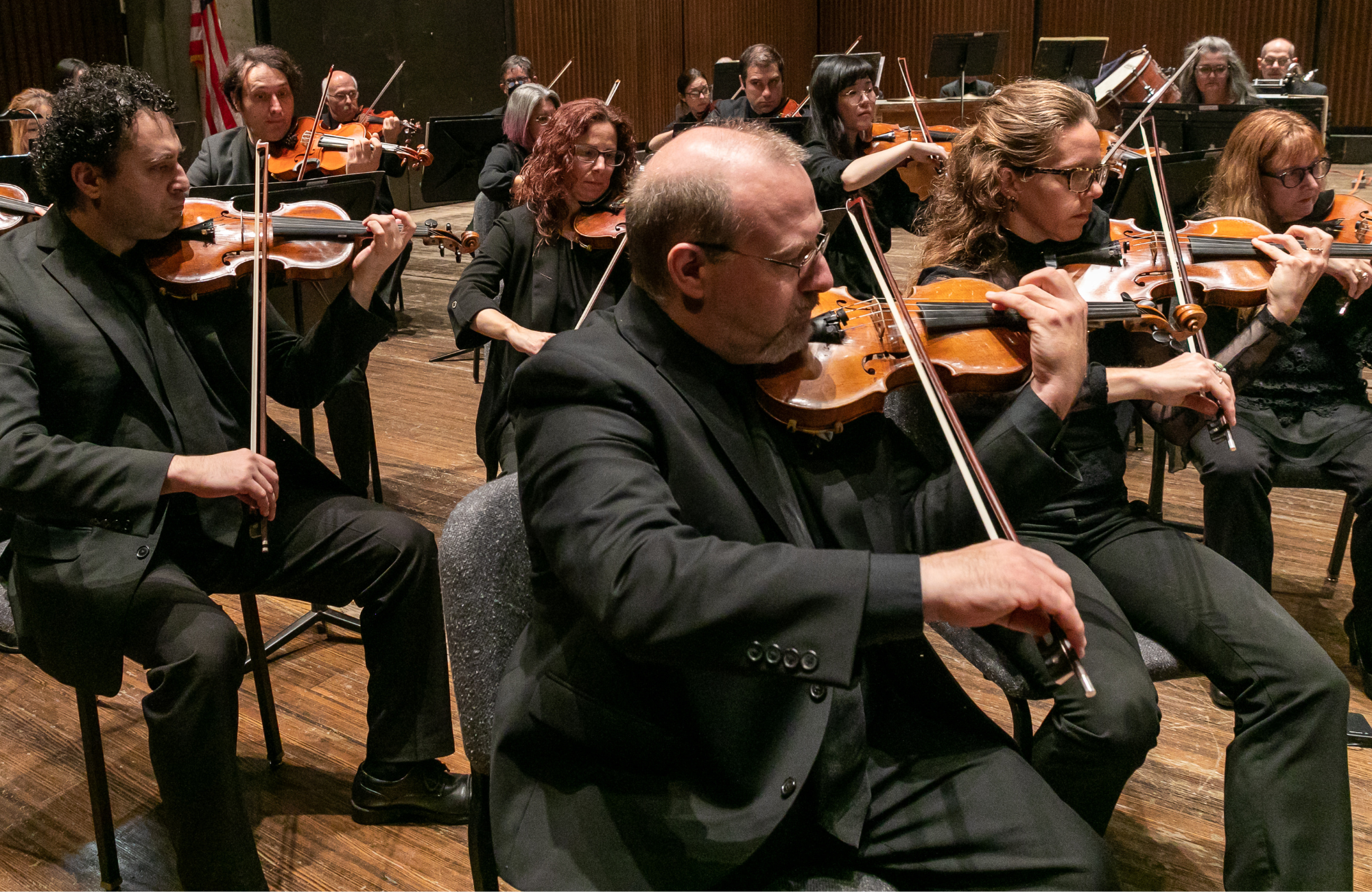Featuring four works inspired by fairy tales, this concert takes you from Mother Goose to Shakespeare to Greek mythology featuring selections by Ravel, Grieg, Tchaikovsky and living composer Stacy Garrop.
Performances of this concert are on Saturday, September 27 at 7:00 PM and Sunday, September 28 at 3:00 PM.
PROGRAM
GRIEG: Peer Gynt, Suite No. 1, Opus 46![]()
STACY GARROP: Penelope Waits from Mythology Symphony
RAVEL: Ma Mère l’Oye (Mother Goose) Suite of Five Pieces![]()
TCHAIKOVSKY: Romeo and Juliet, Overture-Fantasy![]()
Thank you to our generous sponsors!
Thank you to our series sponsors!
Casual Series Title Sponsor:
Exclusive Auto Sponsor:
PROGRAM NOTES
The four works on this week’s concerts have a common thread: Each draws its inspiration from a pre-existing story or group of stories. Yet there’s plenty of variety in that overall unity, since each work chosen by our conductor Austin Chanu has a different take on the relationship between the source and the music. As he puts it, each of the pieces “has its own approach to telling a story.”
At the center of the program is the Mother Goose Suite (1911) by Maurice Ravel (1875–1937). The work has fascinated Austin ...
The four works on this week’s concerts have a common thread: Each draws its inspiration from a pre-existing story or group of stories. Yet there’s plenty of variety in that overall unity, since each work chosen by our conductor Austin Chanu has a different take on the relationship between the source and the music. As he puts it, each of the pieces “has its own approach to telling a story.”
At the center of the program is the Mother Goose Suite (1911) by Maurice Ravel (1875–1937). The work has fascinated Austin since he was a student. In part, the attraction stems from Ravel’s genius as an orchestrator. Mother Goose began in 1910 as a four-hand piano work to be played by children (granted, extremely talented children). But Ravel orchestrated it the next year (he also made an expanded version to serve as a ballet), using a surprisingly small orchestra to produce a vast range of color. This kind of transformation was typical of him, as he often transcribed both his own piano music and that of others (most famously Mussorgsky’s Pictures at an Exhibition)—and, says Austin, “I think Ravel does it better than any other composer.” Austin especially admires this adaptation. The original piano parts “are simple and bare,” but Ravel managed to draw all “all these harmonies and all these colors that weren’t really apparent in the piano score. That shows how imaginative his orchestration technique was.”
But there’s a second reason for his fascination with the score—one that explains why Mother Goose serves as the anchor of this program. “It’s as if he were just reading the story aloud,” says Austin. “In ‘Tom Thumb,’ you can hear the birds, played by the flutes and violins, come down and eat the trail of breadcrumbs represented by the running eighth notes. And in ‘The Conversations between Beauty and the Beast,’ we can actually hear the conversation between Beauty, played by the clarinet, and the Beast, played by the contrabassoon.”
The characterization is especially acute in “Beauty and the Beast.” Bassoonist Jessica Wooldridge-King, who will be playing the contrabassoon at these concerts, points to the interplay of the instruments, delightfully presented as a slow waltz. “The two,” she says, “are having an exchange in which a difference of opinion arises.” The unusually high register to which the contrabassoon has to climb “is very unidiomatic for the instrument, and reflects the Beast’s vulnerability. In order to be with Beauty, he must turn away from the more base aspects of his nature and in doing so, he transforms.” That transformation is heard in a harp glissando that you might think the most magical musical moment you’ve ever heard—at least until Ravel outdoes himself in the fairy garden at the very end of the work.
If Ravel is telling a story aloud, Norwegian composer Edvard Grieg (1843–1907), in Peer Gynt (1874), is providing a backdrop for a tale that’s being told elsewhere—specifically, on stage. This score started out as incidental music for a drama in verse by Grieg’s great compatriot, Henrik Ibsen—a sprawling work written years before the series of plays for which Ibsen is best remembered (A Doll’s House, The Wild Duck, and Enemy of the People, among others). And rather than represent the action itself, the music was intended either to set the scene (that is, to invoke a particular mood) or, as Austin puts it, to “to highlight and emulate what was happening on the stage at the same time, almost like an early film score.”
Grieg originally wrote a vast amount of music for the play—26 pieces in the authoritative Peters Edition. But its links to the cumbersome drama—more than thirty scenes, jumping from the realistic to the fantastic, from Norway to the Middle East—limited its performance possibilities. He therefore created two suites, four movements each, incorporating some of the most audience-appealing music from the score. On these concerts, we’re playing the first and most popular of them.
It was a wise choice. While the play has pretty much disappeared from the repertoire, the music is sufficiently independent of its initial purpose that it nonetheless managed to last—in fact, to become one of the nineteenth century’s greatest hits. Just how independent is it? One example can serve for many: Perhaps the most recognizable number is thefirst, “Morning Mood” (even if you think you don’t know it, there’s a good chance you’ll recognize it); and many listeners, aware of Grieg’s Norwegian heritage, summon up thoughts of Norwegian forests and fjords when they hear it. In fact, as Austin reminds us, it was originally intended as a “sunrise over the Moroccan desert.” To put it in different terms, the music from Peer Gynt may originally have had a fairly specific programmatic purpose. But over the last 150 years, it has become increasingly abstract. You don’t need to know much about Ibsen to enjoy it.
Romeo and Juliet, composed by Peter Ilyich Tchaikovsky (1840–1893) between 1869 and 1880, is connected to story in yet a different way. Although it’s called an “Overture-Fantasy,” it’s not an overture in the sense of an introduction to the play—and it certainly doesn’t follow Shakespeare’s plot. Rather, it’s more a meditation about the play. The score has three primary musical ideas—a religious-sounding chorale representing Friar Laurence, a violent outburst evoking the animosity between the Montagues and the Capulets, and a radiant theme embodying Romeo and Juliet’s passion. And using standard sonata form as a general scaffolding, he runs these ideas against one another in a dramatic fashion—“developing them,” notes Austin, “overlapping them, and creating this controlled chaos—so there are moments where all three of these things are happening at the same time.”
Although Tchaikovsky did not have an easy time composing Romeo (the edition we normally hear is the third he made of the score), it has become one of his most popular and recognizable pieces, in part because it epitomizes two of his most popular qualities. Especially in the fight scenes, as Austin says, he’s going, “for as much tension and drama as he can”; and the love music, familiar from innumerable films and commercials, stands with the love music from Wagner’s Tristan as the height of the nineteenth century’s musical depiction of sexual longing. Tchaikovsky had worked long on developing ways of expressing drama and passion in such scores as Eugene Onegin (1878) and Francesca da Rimini (1876)—and by the time he polished Romeo, he had perfected his art.
Penelope Waits, by Stacy Garrop (b. 1969) is a perfect foil to the Tchaikovsky. Inspired by Homer’s The Odyssey, it too is a love story. But where Romeo is over the top, Penelope Waits is subtle and secretive; where Romeo has a strong forward momentum, Penelope Waits is more patient. Or perhaps not. While Odysseus has been returning from the Trojan War—a return continually delayed—his wife Penelope has been at home. “She’s patiently waiting,” says Stacy, “but she’s not really that patiently waiting, because she has all these suitors who arrive and try, after 20 years, to get her to ditch her husband and marry one of them instead so they can inherit everything.” She holds them off with a false promise: “She keeps saying, ‘I’m going to weave this shroud, and when I finish, I’ll choose a suitor.’ But every night, she unravels what she just did.”
The music reflects this weaving and unraveling. The music is not in strict retrograde—that is, the notes and gestures are not presented in reverse during the second half as they are in the palindromic interlude at the center of Alban Berg’s opera Lulu. But you can nonetheless feel the music moving backward after the highpoint in the center, with the sense that it’s returning to where it began. As Stacy puts it, the “form unravels itself after the halfway point.”
But Penelope Waits is more than an external representation of Penelope’s action; it’s also the only work on the program that explores a single character’s perspective throughout. “Stacy highlights the differences in Penelope’s mental states through the orchestra,” Austin observes—by changing the harmonies and the orchestral colors. The part for the first oboe is especially prominent. Principal oboist Eduardo Sepúlveda, who coincidentally had the pleasure of working with Stacy this summer at the Cabrillo Festival of Contemporary Music in Santa Cruz, notes that “you can tell she likes writing for the woodwinds. Remember when we talked about the Strauss Oboe Concerto last season, about how the soloist had duets with different people in the orchestra at different times? This piece works in a similar way. The oboe opens it, and the oboe closes it as well. In between, it gets mixed—with the flute, with the clarinet…; and it sometimes takes secondary roles, doing lower voices. It’s really interesting to see how this tone, this color, is mutating.”
Penelope Waits is one movement from Stacy’s magnificent Mythology Symphony—and if you remember “The Lovely Sirens,” which we performed last season, you’ll have some idea of the orchestral, harmonic, and melodic control that awaits you.
Peter J. Rabinowitz
Have any comments or questions? Please write to me at prabinowitz@SyracuseOrchestra.org
FEATURED ARTISTS

A recipient of the 2024 and 2023 Career Assistance Award from the Solti Foundation U.S., Brazilian-American conductor Austin Chanu just concluded his tenure the Assistant Conductor of The Philadelphia Orchestra, where he assisted Music Director Yannick Nézet-Séguin.
Austin made his subscription debut with The Philadelphia Orchestra ...
A recipient of the 2024 and 2023 Career Assistance Award from the Solti Foundation U.S., Brazilian-American conductor Austin Chanu just concluded his tenure the Assistant Conductor of The Philadelphia Orchestra, where he assisted Music Director Yannick Nézet-Séguin.
Austin made his subscription debut with The Philadelphia Orchestra in April 2023 conducting Igor Stravinsky’s The Rite of Spring. Critics commended his interpretation saying, “the orchestra never sounded better as Chanu led with primal energy and shamanistic insight into the music…the orchestra matched Chanu’s confident leadership in a performance of searing energy and heart-thumping passion” (Broad Street Review).
Austin recently placed 3rd in the Korean National Symphony Orchestra International Conducting Competition where he also was awarded the orchestra prize. He has appeared as a guest conductor with the Filarmonica Banatul Timișoara, Baltimore Symphony Orchestra, St. Louis Symphony Orchestra, Rochester Philharmonic Orchestra, and Omaha Symphony. He has worked with prominent conductors including Esa-Pekka Salonen, Herbert Bloomstedt, Stéphane Denève, and Marin Alsop.
Austin is currently co-leading a project with The Philadelphia Orchestra to restore, rebuild, and elevate the underperformed works of American composer William Grant Still. Austin recently led the world premiere of a newly restored edition of Still’s Wood Notes that he helped create.
Austin has a passion for contemporary music, stemming from his own background as a composer. He served as a teaching artist and conductor for the LA Philharmonic Association’s Associate Composer Program, as well as a Conducting Fellow at the 2022 Cabrillo Festival of Contemporary Music, where he studied with conductor Cristian Măcelaru. He was commissioned by the Eastman School of Music to compose an orchestral work for the school’s centennial celebration and conducted its world premiere in the Fall of 2021.
Previously, Austin was Music Director for the Los Angeles Music and Art School, where he conducted and developed the artistic direction for the youth orchestra, choirs, and jazz band. Austin found it rewarding to draw on his Latino heritage to foster representation for the predominantly Latinx students and families in the program through repertoire selection.
In addition to his orchestral background, Austin has extensive experience in jazz and musical theatre styles. While living in Los Angeles, he was a high-call woodwind performer for musical pit orchestras and jazz ensembles.
Austin received a B.M. in Music Composition from the USC Thornton School of Music in 2015, graduating Magna cum Laude. He graduated from the Eastman School of Music in 2021 with an M.M. in Orchestral Conducting.






